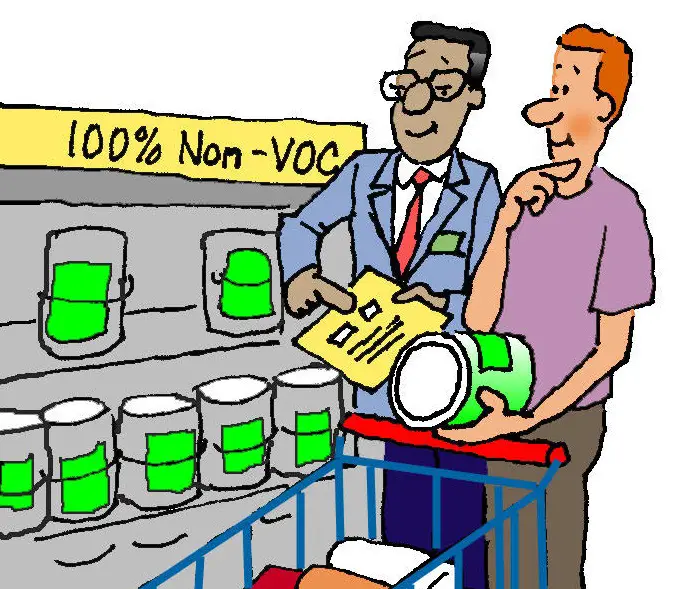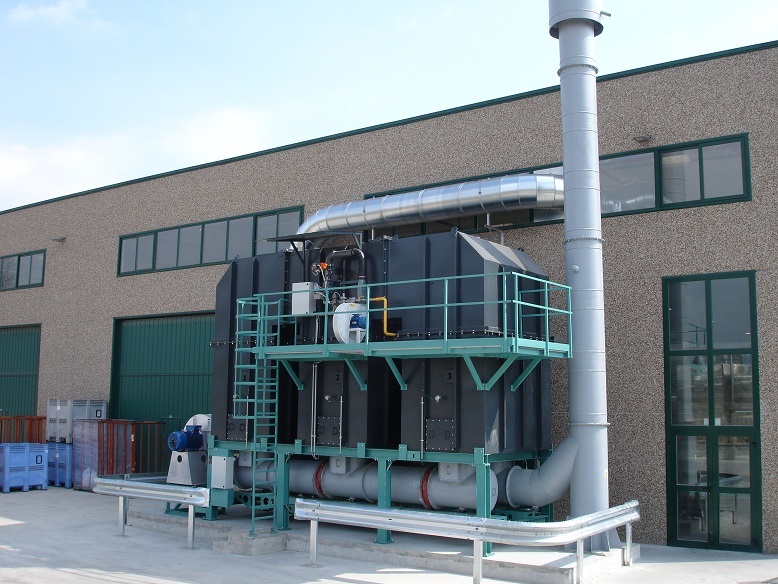Those in the habit of reading the labels of paint cans, home care products, even cosmetics more carefully almost always find references to VOCs (or VOCs if the label is not in English). This is not about a specific product, but about a large group of chemicals, especially solvents, which have attracted the attention of authorities (and not only) around the world because of their impact on the environment, but also on the quality of life. VOC is short for volatile organic compounds. Concern about the presence of these products in the air we breathe, in the atmosphere that surrounds the earth, began some time ago. Regulations, bans and limitations on their presence in industrial and consumer products have emerged.

What are volatile organic compounds VOCs
Volatile organic compounds are a very broad class of products. Physico-chemically they are organic chemicals that have a high vapour pressure and low boiling point so that they evaporate easily. Not all of these products are hazardous to the body or the environment and therefore each country has a list of products that are considered hazardous and their emissions are limited. They include benzene, toluene, xylene, ethyl alcohol, formaldehyde. Most of these substances are used as solvents for resins, oils, waxes, in various industries. That is why they are taken together and the limitation is imposed on all substances in a product that evaporate (all the solvent in a paint or cleaning product).
Emissions affect both the space we live in, inside our homes, and the environment. The interior of homes is affected by solvent emissions from paints, cleaning and maintenance products, even some cosmetics. Accumulation of these emissions in enclosed spaces can lead to headaches and breathing problems. If there are health problems - allergies, asthma or respiratory problems - they can be aggravated by the presence of VOC emissions. It is a good idea not to use products with a high solvent content in enclosed spaces, and if we have to, to ventilate the premises thoroughly during and after work.
If we think about the influence on the environment the problem becomes even more serious. Decades of industrial development where no one has taken all these emissions into account have led to environmental damage and holes in the ozone layer. That's why regulations in highly industrialised countries are becoming increasingly stringent.

VOCs worldwide
Despite the general consensus that emissions are harmful to the environment, not all countries have the same regulations and the list of products considered to be VOCs is different. Even their definition is different. The US, Canada and China consider volatile organic products to be any product that participates in atmospheric photochemical reactions. While Canada considers that all organic products in gaseous form can participate in such reactions, the US excludes carbon monoxide and dioxide, carbonic acid and other derivatives, for which it has special regulations. The US has a list of products with emission limits at state level, but there are also lists at Member State level. Japan considers all gaseous chemicals released into the atmosphere as volatile organic compounds.
The European Community considers a volatile organic compound to be any organic product having a boiling point less than or equal to 250ºC measured at a standard pressure of 101.3 kPa, i.e. all solvents used in the manufacture of lacquers, paints, varnishes or thinners (solvent-based products). However, they are not only used for the production of paints and varnishes. They are found in many cleaning, cosmetic and maintenance products.
First Directive emissions limitation came into being in the European Community in 1999, 4 years after the California Air Resources Board first reported the problem in September 1995. Since then, others have increasingly tightened limits, restricting the use of products using organic solvents.
VOC emissions in industry
In the run-up to Romania's entry into the European Community, the hot topic was the need to reduce VOC emissions by 70%. There was a need to comply with the standards imposed by the EC, and Directive 2004/42/EC on limiting VOC emissions from the use of organic solvents in paints, varnishes and vehicle refinishing products, required clear rules. This requirement made it very difficult for furniture manufacturers, most of whom were working with organic solvent-based materials, to meet the high solvent emissions. Some time has passed since then, and factories have upgraded or replaced much of the varnish they use to meet the limits and avoid environmental fines. Emission calculations have become commonplace and I don't think there is a large factory working with solvent-based products that doesn't do such reporting.
Reducing emissions of volatile organic compounds can be done in two ways:
- the use of combustion or volatile organic compound absorption equipment;
- replacing solvent-based materials with more environmentally friendly ones.
VOC reduction by combustion is achieved through a chemical process that converts these substances into products that can be released into the environment, i.e. water and carbon dioxide. The process is one of final destruction and is used mainly when the substances can no longer be recovered, either because of the complexity of the technology or its cost. The advantage of the process is that it develops a quantity of heat that can be used.
Reduction of VOCs by absorption is based on absorption on activated carbon filters. It is used when VOC recovery is desired or when other treatments are more costly. Activated carbon is a microporous material, of mineral or vegetable origin, characterised by a very high specific surface area, capable of selectively trapping a wide range of molecules. After a while, however, the charcoal becomes saturated, is no longer effective and must be regenerated or replaced.
To avoid the costs of such installations, solvent-based products can be replaced by water-based ones. This is why water soluble products are increasingly present in the offer of companies in the sector and are frequently found in DIY stores. Another reason is that one of the EC regulations obliges varnish and paint manufacturers to reduce the percentage of solvent-based products they produce each year, while increasing the percentage of water-based products proportionally.

VOCs in our daily lives and how they affect us
Although the big problem is the VOC emissions coming from industry, the emissions from private space are not to be neglected either, especially as we sometimes feel this immediately. Sources of VOCs are not just paints, furniture or flooring finished with solvent-based products. Sometimes it's also home care products, cosmetics, air fresheners and adhesives. We never think that they might contain substances that affect us and we should pay more attention to what it says on the label.
Unfortunately, there are no regulations on emission limits for volatile organic compounds inside homes. There are devices that can detect VOC and formaldehyde emission levels. They can alert you when certain limits are exceeded. The regulations relate to VOC content and the requirement that information on content and first aid measures must be on product labels or safety data sheets.

Here's what this content means for paints:
- No VOC emissions - less than 1g organic solvents/paint
- Minimum content - between 1 and 3 g organic solvents/l paint
- Low content - between 3 and 30 g organic solvents/l paint
- Average content - between 30 and 80 g organic solvents/l paint.
Accumulation of volatile organic compound emissions indoors can lead to irritation of the eyes, throat or nose, headaches, dizziness and vomiting, respiratory problems. If you have used products containing solvents and experience such symptoms, air out your home thoroughly and remove the source. A good help in purifying the air are houseplants. Long-term exposure to these substances (living in such an environment all the time) can damage the nervous system or more serious problems can occur.
This is also the reason why we recommend whenever possible using natural products, ecological, of those water-based when you want to repaint old furniture or have another kind of house project. In the factory the use of solvent-based products is controlled (withspray booths,finishing linesgas masks and protective equipment), which is almost impossible at home. Don't cut corners by buying cheap products with little or no information on the label, as they can damage your health. This saving can be painfully felt after a while. Often the price differences are not even so great as to justify choosing a harmful product.
I hope you find this information useful and that it helps you stay healthy.



























Add comment